The White House
Introduction
Text-to-speech Audio
Images
South view of the White House facing the Ellipse, also known as President's Park South. The park was designed by Pierre Charles L'Enfant, who laid out the city of Washington in 1791. Photo by Laura Maple
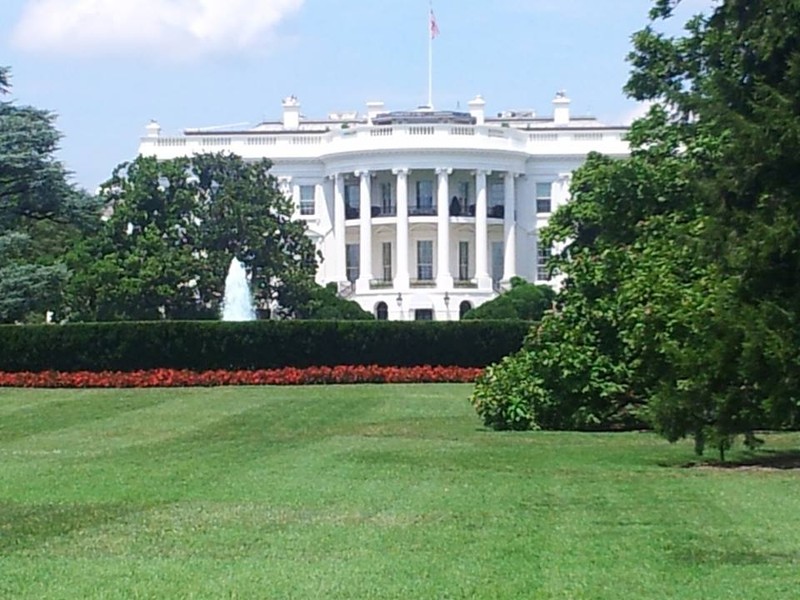
This section of the project's payroll shows government payments to the owners of the slaves who were among the labors who built the White House.
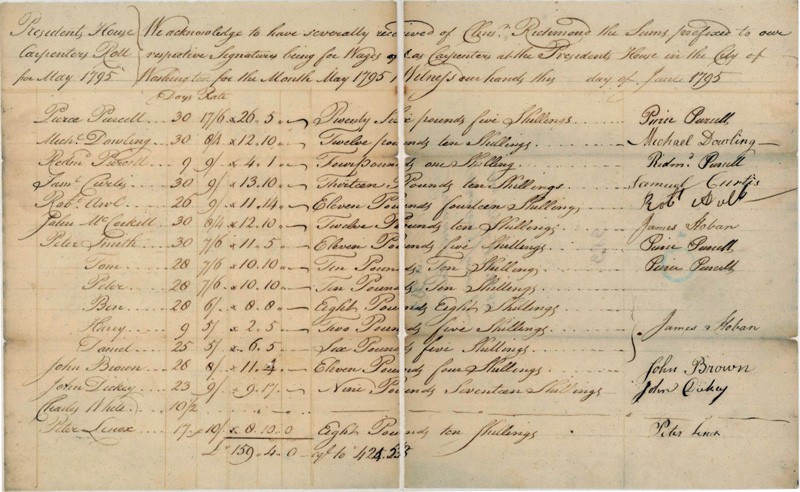
Irish-born architect James Hoban won a design competition and built what would become known as "The White House" based on this design for the Executive Mansion.
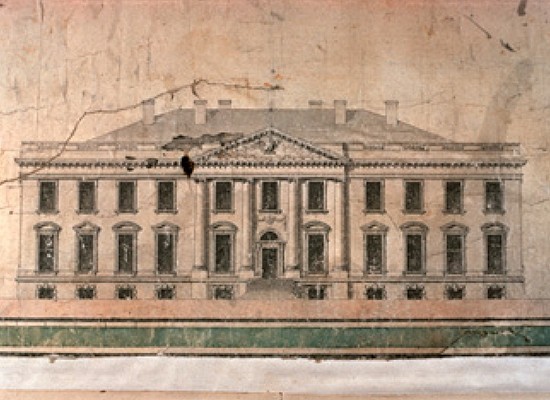
This print depicts the smoldering remains of the Executive Mansion after it was set on fire by the British on August 24, 1814.
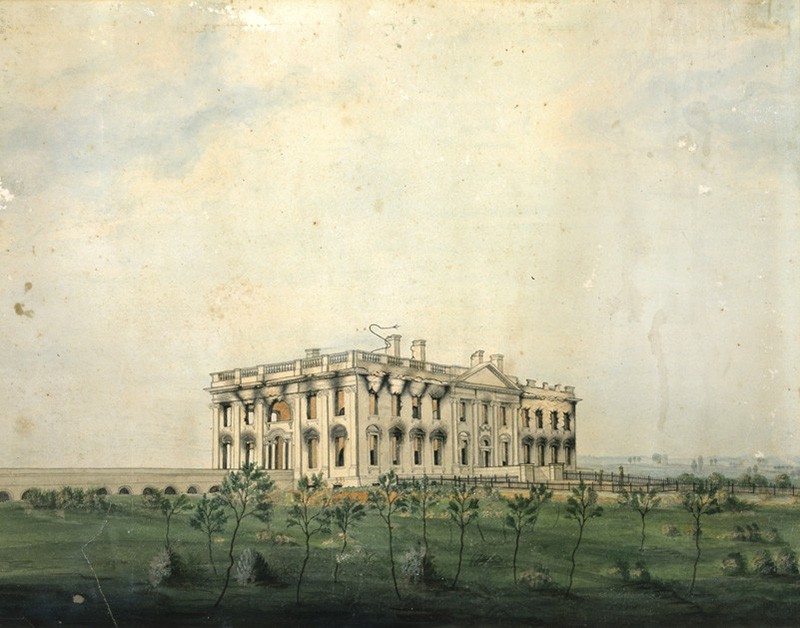
During building renovations in the 1990s, dozens of layers of paint were removed. This photograph of a section where the paint was removed shows the burn marks from 1814.
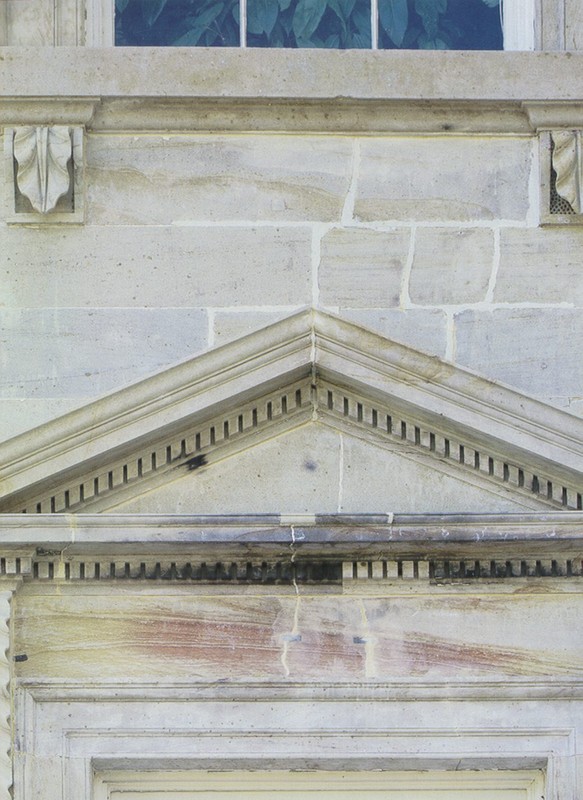
An aerial view of the White House complex. The Executive Mansion is at center, with the East Wing at the left and West Wing at the right. Courtesy of the Library of Congress.

Backstory and Context
Text-to-speech Audio
French architect Pierre L'Enfant created the blueprint for the federal city that became Washington D.C., but he and President George Washington held very different views about the design for what would later be known as The White House. L'Enfant's 1791 plan for the city was based around a central palace that mirrored the grandeur of the dwellings of European heads of state. Believing that America's Executive Mansion should better reflect republican principles, Washington dismissed L'Enfant's plan and held a design competition.
Hoban, an Irish-born and architect who was living in Charleston, South Carolina, won the competition to create the Executive Mansion. Hoban's inspiration for the house was drawn from an Anglo-Irish villa called the Leinster House in Dublin. A second competition was held to determine the design of the nation's capitol. It is believed that Thomas Jefferson, who designed his own home of Monticello, entered the competition under a pseudonym. If this is the case, Jefferson's designs were not selected in either competition.
Construction of the President's home began in 1792. Attempts to recruit skilled workers to the project proved difficult because the capitol was located in a sparsely-settled area. As a result, most of the labor was performed by slaves and free men of color who had fewer employment options. Stonemasons and carpenters trained enslaved people to perform necessary tasks to assist the small number of skilled laborers who joined the project. Slaves also built many of the other buildings throughout the new federal city. According to a letter from First Lady Abigail Adams, who lived in the Executive Mansion while it was being completed, the slaves who worked on the home were "half fed, and destitute of cloathing." She opined that the work could be performed more efficiently by free laborers from New England.
Jefferson defeated Adams in November, 1880, the same month that Abigail Adams wrote about the failure to complete the Executive Mansion. While President, Jefferson personally oversaw some of the construction and ordered several structural changes with the help of architect Benjamin Henry Latrobe. Jefferson's changes included the addition of terrace-pavilions on either side of the main building and single-story wings for storage. In addition to replacing the slate roof with one of sheet iron, Jefferson further improved the grounds by landscaping them in a picturesque manner.
The British set the mansion on fire during the War of 1812. James Madison was President at the time and his wife, Dolly Madison, famously saved artwork including a portrait of George Washington. Despite the British efforts to destroy the building, mother nature had other plans. As British sought shelter from a summer thunderstorm, their fire was extinguished. The interior of the White House had been destroyed, but the outside walls and the interior brick walls survived. Madison brought Hoban back to restore the mansion, a process which took three years. It was during this period of reconstruction that the house was painted white. Hoban later added the South and North Porticos, using a similar design that had been created by Benjamin Latrobe.
Expansion and further alterations were made when President Theodore Roosevelt declared the house unsafe to inhabit and had the original building remodeled. Roosevelt desire to separate his workspace from his family life and did so by making the third-story attic into habitable rooms and adding the Executive Office wing and the East Gallery. In 1909, architect Nathan C. Wyeth extended the West Wing, adding the well-known Oval Office, the President's formal workspace. Although referred to as "The White House" since the time of its construction when its exterior walls were covered with protective whitewash, President Theodore Roosevelt made "The White House" the mansion's official name in 1901.
In the mid-twentieth century, the White House underwent several renovations to improve its structural soundness and historic appearance. In 1949-1951, the building was determined unsafe after years of maintenance neglect. The restoration involved replacing the original frame and paneling with steel, along with adding a balcony to the South Portico. In the meantime, President Harry Truman relocated to the neighboring Blair House, also known as the President's Guest House. These decades also saw increased security and technological integration. Truman welcomed news crews to the White House in the 1950s after the restoration was complete. When John F. and Jacqueline Kennedy moved into the White House in 1961, the stylish and artistically-minded First Lady refurbished the living quarters and publicly accessible spaces with antique furniture, art, and artifacts. She developed a Fine Arts Committee to collect art and Americana and an advisory committee that drafted a treatise on the restoration philosophy. The White House, according to these plans, was both a symbol and functional structure with a “living” character. They chose décor to reflect a multitude of time periods and administrations. Later that year, the White House was declared a museum and Lorraine Waxman Pearce was hired as the first curator of its collections and history. Jacqueline Kennedy also brought this history to the public through magazine articles and a televised tour of the White House in 1962. Lyndon Johnson’s administration continued this work by establishing the Committee for the Preservation of the White House to advise historical preservation, collections acquisitions, and design.
Since the 1960s, the White House has continued to add to its
historical collections while integrating modern technologies to the building. White
House staff began using computers in the 1980s and the first emails were sent
in 1992. In 1979, Jimmy Carter had solar panels installed on the White House roof,
though they were removed in the 1980s as Reagan’s administration promoted fossil
fuels. Solar panels returned under George W. Bush in 2003 and more were added
under Barack Obama in 2013. Despite modern renovations and the addition of
security measures following the terrorist attacks of September 2001,
citizens can still tour the White House with advance registration through their
Congressional offices. In this and in many other ways, the White House remains an
architectural symbol of the American presidency and the republican
ideals of the Founders.
The White House Visitor Center is located just west of the corner of
15th and E Streets, is open daily from 7:30 am to 4 pm. Inside this temporary
visitor center there is an information desk, a 30-minute movie on the
White House, Where History Lives, and the White House
Historical Association gift shop.
Sources
"Architecture,
1790s-1840s." White House Historical Association. Accessed July 2016. https://www.whitehousehistory.org/architecture-1790s-1840s
"Did slaves
build the White House?" White House Historical Association. Accessed July
2016. https://www.whitehousehistory.org/questions/did-slaves-build-the-white-house
Images and
information from the White House Historical Association's White House History
Digital Library. https://www.whitehousehistory.org/digital-library
“White House Technolgy Timeline.” The White House Historical Association. Accessed December 2017. https://www.whitehousehistory.org/white-house-technology-timeline
“The White House Restoration.” John F. Kennedy Presidential Library and Museum. Accessed December 2017. https://www.jfklibrary.org/JFK/JFK-in-History/The-White-House-Restoration.aspx
Nuwer, Rachel. Obama Is Actually the Third President to Install Solar Panels at the White House. Smithsonian.com. August 16, 2013. Accessed December 2017. https://www.smithsonianmag.com/smart-news/obama-is-actually-the-third-president-to-install-solar-panels-at-the-white-house-111247/
